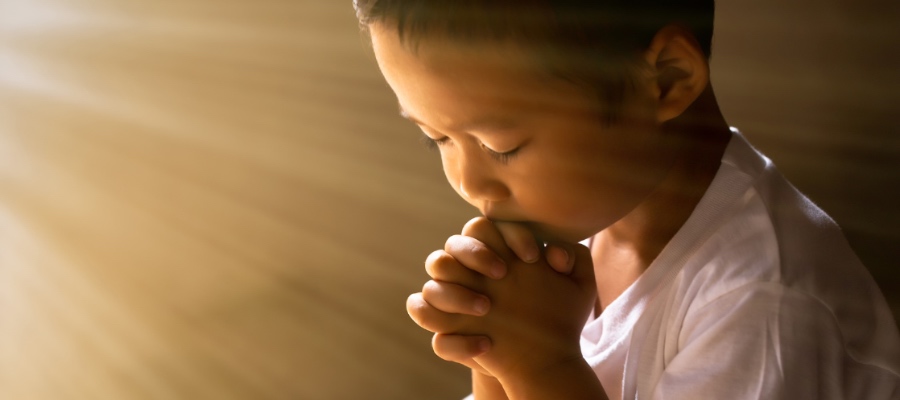In the intricate tapestry of human experience, the recourse to prayer transcends mere ritual; it becomes a conduit for divine assistance. Within the Bahá’í Faith, prayer emerges as a profound mechanism for seeking solace and support from God. This discourse delves into the essence of powerful prayers in the Bahá’í tradition, elucidating their significance, structure, and effect on the believer’s journey. Each prayer not only serves as a plea but also engenders a transformative relationship between the individual and the Creator.
At the core of Bahá’í teachings is the understanding that prayer is a dialogue with God, a sacred conversation fostering connection. This is akin to a buoy tossed into turbulent waters, whose very presence offers hope and steadiness amid chaos. Bahá’í prayers encompass a spectrum of intentions: they can beseech for strength in tribulation, express gratitude for blessings, or implore clarity amidst confusion. Each word, laden with intention, reverberates in the spiritual realm, creating ripples that can influence change in the seeker’s life.
One striking aspect of Bahá’í prayers is their accessibility. They are often approached with a simplicity that belies their profound depth. Importantly, the Bahá’í prayers are not solely for specific occasions but can be invoked at any moment—much like a compass that guides one through the fog of uncertainty. This universality empowers individuals to approach their struggles with confidence, knowing that there is divine assistance readily available.
The structure of Bahá’í prayers frequently embodies a triadic symmetry, reflecting the spiritual significance of the number three, which represents the unity of God, the manifestation of God, and humanity. For instance, a prayer may begin with supplication, transition into gratitude, and conclude with an affirmation of faith. This architectural symmetry enhances the prayer’s resonance, mirroring the inner harmony that one seeks to cultivate within themselves.
Moreover, it is essential to acknowledge that Bahá’í prayers serve multifaceted purposes. They are not solely appeals for personal aid but also encompass collective concern for humanity. This duality is illustrated vividly in the communal prayers offered during gatherings. Such prayers act as a reminder that the collective struggles and aspirations of humanity are intertwined. In this sense, prayer morphs into a communal tapestry, with each thread representing an individual’s hope and need for divine assistance. It is here that the metaphor of a garden thrives, as diverse flowers bloom together, each contributing to the whole while simultaneously reflecting their own distinct beauty.
Furthermore, the efficacy of prayer transcends the verbal articulation of requests. It invites the believer into a deeper state of mindfulness, prompting introspection and self-awareness. Just as a sculptor chisels away at marble to reveal the form within, prayer strips away the extraneous, illuminating the essence of the individual’s true self and aspirations. This journey into self-discovery is crucial, as it enables seekers to align their desires with divine will, facilitating an authentic connection with the Almighty.
Another powerful aspect of Bahá’í prayers lies in their ability to uplift the spirit. Amidst the trials of daily life, they serve as reminders of the omnipresence of divine love and mercy. The act of reciting a prayer can function akin to the warming rays of the sun breaking through the clouds of despair, infusing the heart with hope. It is this inherent power that allows individuals to transcend their circumstances, fostering resilience and fortitude in the face of adversity.
Moreover, the use of specific prayers is tailored to the needs of the seeker. Bahá’ís often recite the “Healing Prayer,” which seeks both physical and spiritual healing, particularly beneficial for those in distress. In the pursuit of understanding and clarity, prayers such as “The Prayer for Guidance” provide solace and wisdom, fostering a sense of direction during tumultuous times. This bespoke nature of prayer amplifies its potency, serving as a bespoke attire tailored to the unique contours of each individual’s predicament.
Yet, it is vital to acknowledge the role of sincerity and fervor in the practice of prayer. A heart imbued with genuine intent acts as a magnet, attracting divine assistance. This echoes the analogy of a lighthouse, its light cutting through darkness, guiding lost vessels to safe harbor. Prayers uttered with sincere intent serve as declarations of one’s faith and reliance upon God, inviting responses that align with the soul’s deepest needs.
In addition, the capacity for prayer to foster community ties cannot be overlooked. When individuals gather to pray, the collective energy creates a sacred space attuned to divine presence. The harmonizing effect of joined voices invokes a palpable spirit of unity, akin to the resonance of a symphony where each instrument, though distinct, comes together to create a transcendent experience. This communal aspect underscores the Bahá’í belief in the oneness of humanity, offering a profound reminder that each individual’s spiritual journey is interconnected.
In conclusion, powerful prayers in the Bahá’í tradition serve as essential bridges to divine support, reflecting a commitment to both personal and collective well-being. Their structure, significance, and communal nature position them as critical elements in the landscape of human spirituality. As seekers navigate the complexities of life, these prayers stand as steadfast beacons of hope and resilience, offering pathways to understanding, healing, and connection with the divine. Ultimately, the act of praying is far more than a search for assistance; it is an invitation to deepen one’s faith and embrace the transformative love of God.
